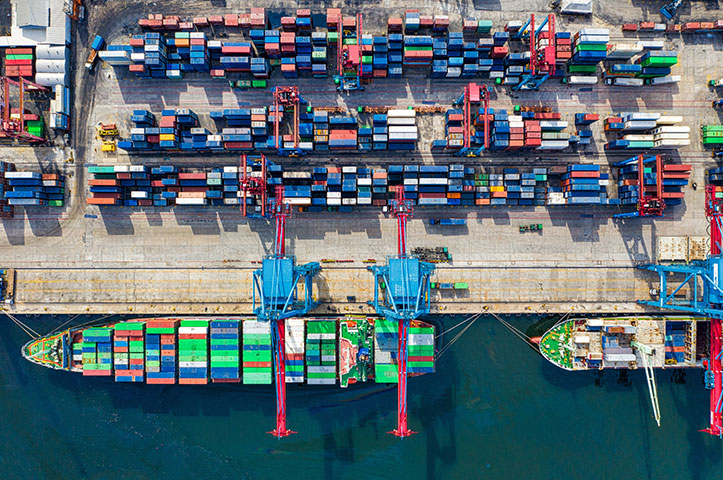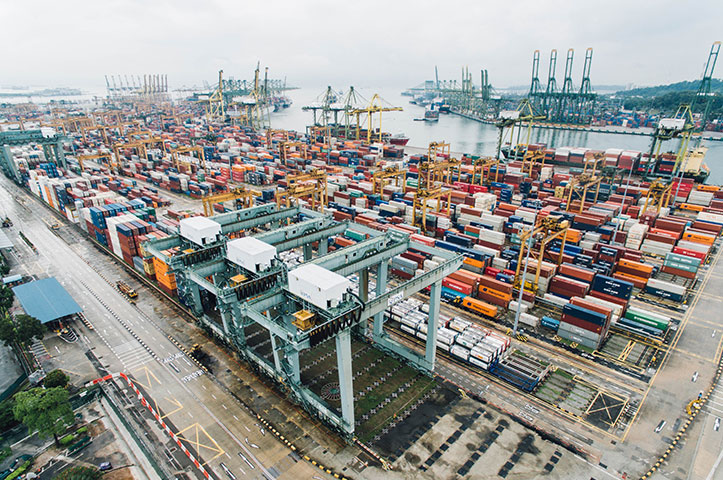
cargo to Africa
The African continent has several important ports crucial in international trade, economic development, and regional connectivity. This article will discuss the top African ports for cargo delivery to Africa, focusing on their location, capacity, facilities, types of cargo handled, and unique features. We will also examine the importance of infrastructure development, efficiency, connectivity to major shipping routes, and their economic impact on surrounding regions.
Lagos Port, Nigeria
Location and Capacity
Lagos Port, also known as Lagos Port Complex, is located in Apapa, the heart of Nigeria’s economic hub. The port serves Nigeria’s massive population and landlocked countries, making it a significant player in the region’s trade.
Facilities and Cargo Handling
Lagos Port is equipped to berth vessels, handle cargo, and stack and store goods. The port has modern facilities and equipment to handle various types of cargo, including containers, bulk, and breakbulk.
Unique Features and Advantages
Lagos Port benefits from Nigeria’s strategic location on the West African coast, which offers excellent connectivity to major shipping routes. The port facilitates trade and supports the country’s economic development.
Port of Abidjan, Ivory Coast
Location and Capacity
The Port of Abidjan is the economic hub of the Ivory Coast and one of West Africa’s leading commercial ports. Located in the country’s largest city, the port generates around 80% of Ivory Coast’s customs revenues.
Facilities and Cargo Handling
The port handles various types of cargo, including containers, bulk, and breakbulk. It also serves as a gateway to landlocked countries such as Mali, Burkina Faso, and Niger, facilitating regional trade and economic growth.
Unique Features and Advantages
Despite infrastructure challenges, the Port of Abidjan benefits from its strategic location on the West African coast and its role as the region’s economic powerhouse.

The port is well-positioned to capitalise on the growing demand for cargo handling services and contribute to the country’s overall economic development.
Port of Saldanha Bay, South Africa
Location and Capacity
Located on the western coast of South Africa, the Port of Saldanha Bay is the busiest port in the country and the continent. The port is known for its deep harbour, which makes it one of the southern hemisphere’s most significant maritime assets.
Facilities and Cargo Handling
Saldanha Bay is equipped to handle various types of cargo, including containers, bulk, and breakbulk. The port also has specialised facilities for exporting iron ore and importing crude oil, making it a crucial player in the global trade of these commodities.
Unique Features and Advantages
The port’s deep harbour allows it to accommodate large vessels, offering increased efficiency and capacity for cargo handling. Additionally, its strategic location on the western coast of South Africa connects it to major shipping routes and enhances its role in international trade.
Port of Durban, South Africa
Location and Capacity
The Port of Durban is situated on the eastern coast of South Africa and is one of the country’s busiest ports. Its various port units include Transnet Port Terminals, Durban Container Terminal, Pier 1 Container Terminal, Multi-Purpose Terminal, Durban Car Terminal, and Maydon Wharf Terminal, showcasing its capacity to handle various types of cargo.
Facilities and Cargo Handling
Durban’s modern facilities enable the port to efficiently manage containers, bulk, breakbulk, and automotive cargo. The port has a comprehensive range of services catering to domestic and international trade needs, including warehousing, cargo handling, and storage.
Unique Features and Advantages
The Port of Durban is well-connected to major shipping routes, making it a vital gateway for South African trade. It’s extensive infrastructure and diverse capabilities provide valuable support to the country’s economic development and positions it as a significant player in the global maritime industry.
Lomé Port, Togo
Location and Capacity
Lomé Port is situated in Togo, West Africa, and has grown cargo volumes recently. The port has become the busiest in the region, handling over 1.5 million TEUs in 2019.
Facilities and Cargo Handling
Lomé Port has state-of-the-art facilities that can manage various types of cargo, including containers, bulk, and breakbulk. Its advanced infrastructure and equipment ensure efficient cargo handling and storage, making it a key player in West African trade.
Unique Features and Advantages
The port’s rapid growth highlights its strategic location on the West African coast and its ability to compete with other regional ports. Its success also demonstrates the importance of investing in infrastructure and modern equipment to support the expansion of cargo handling capacity.
Port of Mombasa, Kenya
Location and Capacity
The Port of Mombasa is the busiest in East and Central Africa, with a capacity to handle 1.4 million TEUs.

It ranks among Africa’s top ten fastest-growing container ports and boasts an annual growth rate of approximately 10% in cargo throughput.
Facilities and Cargo Handling
Mombasa’s facilities are equipped to manage various cargo types, including containers, bulk, and breakbulk. The port also supports the region’s agricultural exports, connecting East Africa’s producers to global markets.
Unique Features and Advantages
The Port of Mombasa benefits from its strategic location on the East African coast, which offers excellent connectivity to major shipping routes. It plays a crucial role in facilitating regional trade and supporting the economic development of East and Central African countries.
Conclusion
The top African ports for cargo delivery to Africa are vital to the continent’s a trade and economic growth. These ports, including Lagos, Abidjan, Saldanha Bay, Durban, Lomé, and Mombasa, offer unique advantages and features contributing to their success in the global trade landscape. Investment in infrastructure development, efficiency, connectivity, and modern equipment is essential to ensure that these ports continue to support Africa’s economic ambitions and remain competitive in the international maritime industry when handling cargo to Africa.






